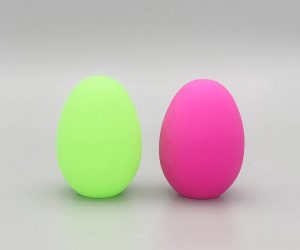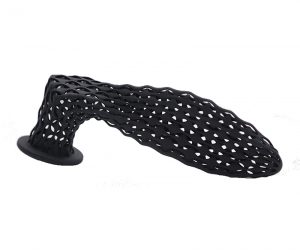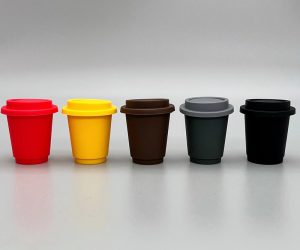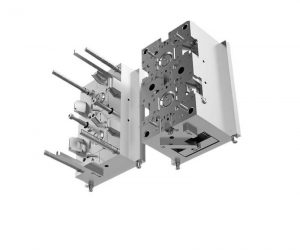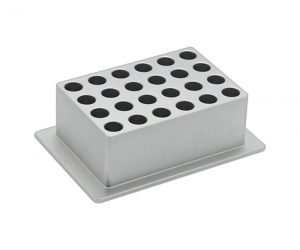the surface finish of injection-molded parts is influenced by a range of factors, including the mold's design and manufacturing quality, the injection molding process parameters, the choice of materials, and the maintenance of the molding equipment. By managing these variables effectively, manufacturers can significantly enhance the surface finish, improving both the aesthetic appeal and functionality of the parts.
Overview of Injection Mold Surface Finish
Surface finish is a critical component in the production of high-quality injection-molded plastic parts. It refers to the texture or appearance of a part's exterior, which can vary from matte to glossy. Achieving the desired finish requires a careful balance of material selection, mold design, and process parameters.
The importance of a well-executed surface finish cannot be overstated. Not only does it enhance the part's visual appeal, but it also contributes to its overall functionality, durability, and ease of assembly. Additionally, a high-quality surface finish can help mitigate imperfections, such as knit lines, which are common in injection molding.
Different industries demand varying surface finish standards. For instance, medical device components require ultra-smooth surfaces to prevent bacterial growth, while automotive parts might need textured finishes to improve grip or reduce glare.
Definition and Standards of Surface Finish
Surface finish refers to the quality or texture of a surface after manufacturing, which impacts the part's appearance, functionality, and performance. A good surface finish enhances moldability, reduces friction, and prevents corrosion and wear.
The International Organization for Standardization (ISO) has set forth standards to ensure consistency across manufacturers. For example, ISO 4287 provides guidelines for measuring surface texture using contact profilometers, while ISO 25178 defines non-contact optical methods for topography assessment.
ASTM standards, such as ASTM D7843 and ASTM E2428, are used for evaluating surface finishes, with the latter focusing on measuring roughness parameters like Ra (roughness average) using stylus instruments.
Adhering to these industry standards is essential for ensuring accurate and consistent measurements, which manufacturers can use globally to assess surface finish quality.
Factors Affecting Injection Mold Surface Finish
Achieving a high-quality surface finish in injection molding is influenced by several key factors: resin selection, mold design, processing parameters, and mold maintenance.
Resin Selection
The choice of resin has a profound impact on the surface finish of molded parts. Materials with varying flow properties, shrinkage rates, and surface appearances all contribute differently to the final result. For example:
- Amorphous materials like Polycarbonate (PC) or Acrylic tend to produce glossy finishes due to their transparent nature.
- Semi-crystalline materials like Polyethylene (PE) or Polypropylene (PP) often yield more matte finishes.
Additionally, the presence of fillers (such as mineral fillers) can alter surface appearance. Mineral-filled plastics, for instance, tend to appear duller compared to unfilled resins because mineral particles scatter light unevenly.
Mold Design and Construction
The mold's design directly influences the part's surface finish. Any imperfections, such as scratches or machining marks on the cavity surfaces, can be transferred to the molded part. To achieve high-quality surfaces:
- Smooth mold surfaces are critical for producing fine finishes.
- Venting channels must be properly designed to prevent gas buildup, which can cause defects like gas burn marks.
- Gate location should be optimized to avoid leaving visible marks from sprue removal, thus reducing the need for costly post-processing.
Thermoplastic Processing
The injection molding process itself significantly impacts surface finish. Factors such as melt temperature, injection speed, packing pressure, and cooling rate play essential roles in achieving smooth, defect-free surfaces:
- High melt temperatures or slow injection speeds can cause issues like weld lines or burn marks.
- Inadequate packing pressure during the mold filling stage can lead to warping, affecting the part’s overall geometry and aesthetics.
Mold Maintenance and Repair
Ongoing mold maintenance is vital for ensuring a consistent surface finish. Regular mold cleaning and lubrication prevent debris accumulation, which can leave blemishes on parts. Additionally, properly maintaining moving mold components helps avoid wear and tear, ensuring long-lasting, high-quality molds and reducing the need for costly replacements.
Surface Preparation and Treatment
To achieve optimal surface finishes, several techniques can be employed, including polishing, texturing, and coating.
Polishing Techniques
Polishing is used to achieve a smooth, shiny surface finish. This process involves using abrasives like diamond paste or aluminum oxide to eliminate imperfections. Various polishing methods are employed, depending on the desired finish:
- A rough polish may require a single pass with coarse abrasives, while a mirror finish demands multiple passes with increasingly fine abrasives.
However, over-polishing can lead to issues such as sink marks or uneven surfaces. Achieving a balance between finish quality and part geometry is critical.
Texturing Techniques
Texturing involves adding specific patterns or roughness to the surface for functional or aesthetic purposes. Two primary techniques are used:
- Chemical etching, which employs acid-based solutions to dissolve metal parts exposed through a mask, creating textured impressions.
- Mechanical engraving, where high-precision tools engrave patterns directly into the mold. This method allows for more intricate textures but is more expensive.
Texturing can improve the part's grip, reduce friction, or add aesthetic appeal.
Coating Techniques
Coating is often used to enhance the surface finish by providing additional properties like wear resistance or corrosion protection. Common coating methods include:
- Physical Vapor Deposition (PVD) and Chemical Vapor Deposition (CVD), which deposit thin layers onto the mold’s surface.
- Electroplating, where metal ions are plated onto the mold surface via an electrolytic process, providing excellent adhesion.
- Thermal spray coatings, which involve spraying heated material onto the surface to create thicker coatings with specific properties.
Surface Finish Measurement and Inspection
Measuring and inspecting surface finish are essential to ensure consistency and quality. Common techniques include:
- Profilometers, which trace the surface to measure roughness parameters such as Ra (average roughness) or Rz (maximum peak-to-valley height).
- Optical interferometry, which uses light to create interference patterns, offering a non-contact method for assessing roughness.
- Visual inspection and black-light techniques help detect visible imperfections, such as scratches or contamination.
Advanced technologies, such as 3D scanning and digital microscopy, enable detailed analysis of microscopic surface features, ensuring high accuracy in quality control.
Quality Control and Assurance
Quality control is crucial for ensuring consistent surface finishes across production batches. Implementing process control measures, including standard operating procedures (SOPs) for temperature, pressure, and cycle time, helps maintain consistent molding conditions. Regular inspections using optical comparators or microscopes can also identify defects early in the production cycle, reducing the need for costly rework.
Additionally, adherence to ISO standards, such as ISO 9001:2015, helps establish and maintain quality management systems, ensuring that quality control measures are systematically integrated into the manufacturing process.
Conclusion
In conclusion, optimizing the surface finish of injection-molded parts is essential not only for aesthetic appeal but also for performance, durability, and functionality. By carefully selecting materials, designing molds with precision, and optimizing processing parameters, manufacturers can achieve the desired surface finish. Post-processing techniques, including polishing, texturing, and coating, further enhance the final product's quality.
Achieving the right surface finish involves a balance between production costs, lead times, and quality expectations. By adopting best practices and adhering to industry standards, manufacturers can ensure their injection-molded parts meet the high demands of the market, delivering exceptional results across diverse applications.
Frequently Asked Questions
What determines the surface finish of the injection-molded part?
The surface finish is determined by several factors, including:
- Mold texture: Smooth or textured mold surfaces directly affect the part’s finish.
- Material selection: Different resins have varying flow properties and surface characteristics.
- Injection molding process parameters: Factors such as injection speed, melt temperature, and cooling time play a significant role.
How do you improve surface finish in injection molding?
To improve surface finish:
- Optimize mold design: Use smoother molds or employ texturing techniques.
- Enhance mold surface treatments: Polish or apply high-quality coatings.
- Adjust process parameters: Fine-tune injection speed, melt temperature, and packing pressure.
What are the different finish levels in injection molding?
Injection molding offers several finish levels, including:
- High gloss: A smooth, mirror-like finish.
- Matte or satin: A low-gloss finish with diffuse reflectivity.
- Textured: Patterns added to improve function or aesthetics.
- Grainy or rough: Deliberately rough finishes created for specific purposes.
By understanding these factors and techniques, manufacturers can select the appropriate surface finish that meets their product requirements, ensuring optimal performance and customer satisfaction.
